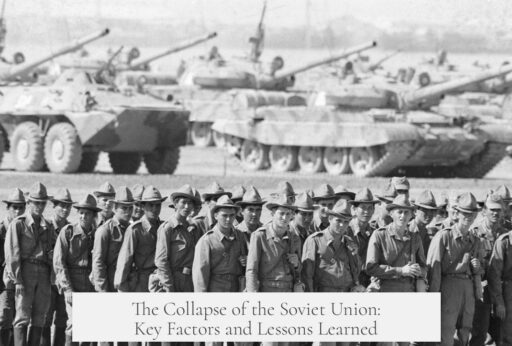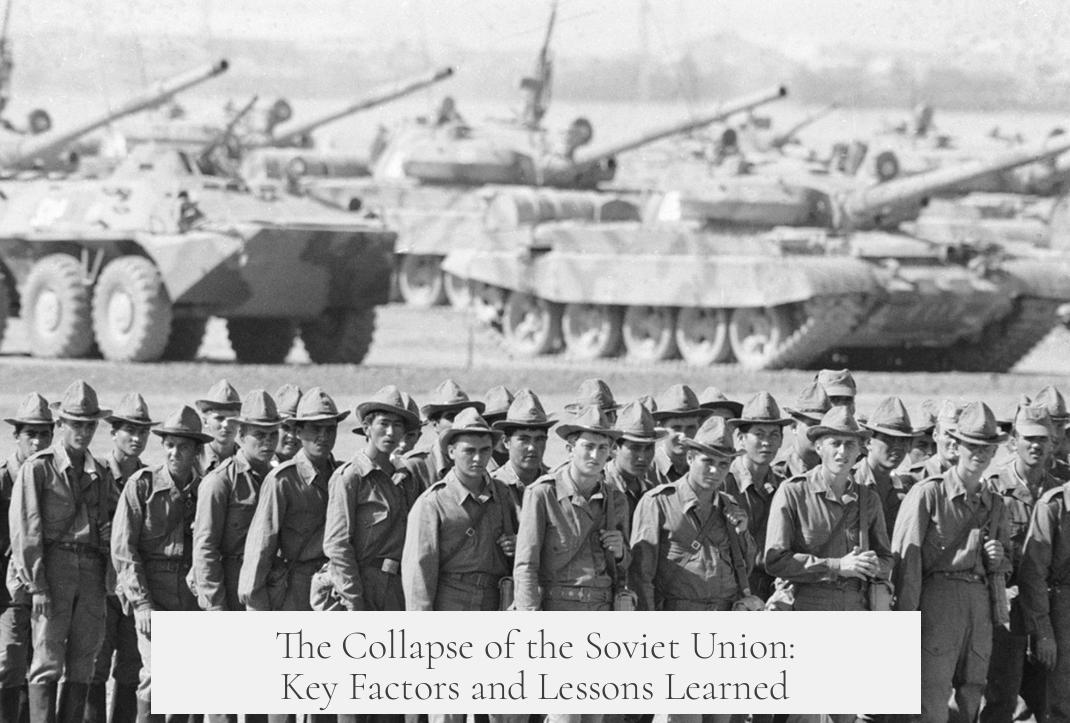The Soviet Union collapsed largely due to Mikhail Gorbachev’s reforms combined with rising nationalist movements and political shifts led by Boris Yeltsin. Gorbachev’s economic and political reforms unintentionally weakened the centralized Soviet system. This erosion, coupled with increased demands for sovereignty by republics and Yeltsin’s push for Russian dominance, led to the disintegration of the USSR into independent states by 1991.
Gorbachev initiated reforms in 1985 aiming to revitalize the Soviet economy and political system. These reforms began with moderate measures focusing on improving morality and reducing corruption domestically, alongside attempts to modernize the economy. Known as the “Reform Period” (1985-1988), it included campaigns like the anti-alcoholism initiative and efforts to increase transparency.
When initial reforms fell short, Gorbachev shifted to more radical changes from 1988 to 1990, called the “Transformation Period.” He withdrew Soviet forces from Afghanistan in 1989, reduced military spending, and ended Soviet control over Eastern European satellite states. Domestically, he established a semi-democratic Congress of People’s Deputies and introduced glasnost—lifting censorship to promote openness. These moves aimed to build new political support but inadvertently weakened the Communist Party’s monopoly.
The reform momentum escalated into chaos by 1990-1991, known as the “Collapse Period.” Economic pressures worsened when oil prices fell and government revenue dropped dramatically due to reduced alcohol sales, a major budget source. Attempts to liberalize business management without full economic restructuring caused budget deficits that the government covered by printing more money. These factors created economic instability and political disarray that spiraled beyond Gorbachev’s control.
Boris Yeltsin emerged as a critical figure in accelerating the Soviet Union’s dissolution. Elected President of the Russian Soviet Federative Socialist Republic, Yeltsin championed Russian nationalism and market reforms. He argued that the USSR imposed economic and political burdens on Russia. He criticized Moscow’s concessions to other republics’ influence and claimed Russia subsidized the economically weaker republics, which drained its resources.
Yeltsin pushed claims that the USSR suppressed Russian government development and cultural heritage, including traditions like the Russian Orthodox Church, an argument supported by dissidents like Alexander Solzhenitsyn. After gaining massive popular support, Yeltsin outmaneuvered conservative forces, especially following a failed conservative coup in 1991. He transferred significant power from Soviet institutions to Russian ones and promoted Russian sovereignty within the collapsing union.
Alongside Yeltsin’s rise, other Soviet republics pursued independence. By 1990, most republics declared sovereignty under newly elected anti-Soviet leadership. The Union Treaty did not account for this scenario, creating a constitutional crisis. Moscow’s central authority eroded as republics from the Baltics to Ukraine and beyond asserted autonomy or declared full independence.
The conservative Soviet leadership attempted to roll back reforms and suppress nationalist movements. They urged Gorbachev to declare a state of emergency and assume stronger authoritarian control. Gorbachev declined, focusing instead on renegotiating the union’s structure. Limited force was used in the Baltic republics to quell dissent, but harsh repression was minimal. Public exposure of violence and international pressure, especially from the United States, discouraged widespread military crackdowns.
Ukraine’s 1991 referendum for independence was pivotal. Its decision to leave the union eliminated any realistic chance for the USSR’s continuation. By then, the Soviet government was largely powerless. On December 25, 1991, Gorbachev resigned as USSR President. The Soviet Union formally dissolved, creating fifteen independent countries.
| Factor | Impact on Soviet Collapse |
|---|---|
| Gorbachev’s Reforms | Unintentionally weakened central control; economic disruptions; political liberalization undermined Communist Party |
| Economic Crisis | Falling oil prices, budget deficits, destabilized economy, increased debt |
| Boris Yeltsin | Mobilized Russian nationalism; pushed for market reforms and sovereignty; weakened USSR institutions |
| Republic Nationalism | Growing sovereignty declarations; demand for independence; constitutional crisis in the union |
| Conservative Opposition | Failed coup and repression attempts; inability to reverse reform |
The Soviet Union collapsed through a complex interplay of reform efforts that undermined state control, economic hardship, assertive nationalist movements, and political leadership shifts. Gorbachev’s sincere but ineffective reforms removed old structures but failed to establish stable alternatives. The rise of Yeltsin and nationalist republics filled the power vacuum with competing visions incompatible with Soviet unity.
- Gorbachev’s reforms aimed to save the USSR but ended up destabilizing it.
- Economic troubles intensified due to falling oil prices and budget deficits.
- Boris Yeltsin’s Russian nationalism accelerated the collapse.
- Growing nationalist demands in republics eroded central authority.
- Conservative attempts to preserve the USSR failed after the 1991 coup attempt.
How Did the Soviet Union Just Collapse?
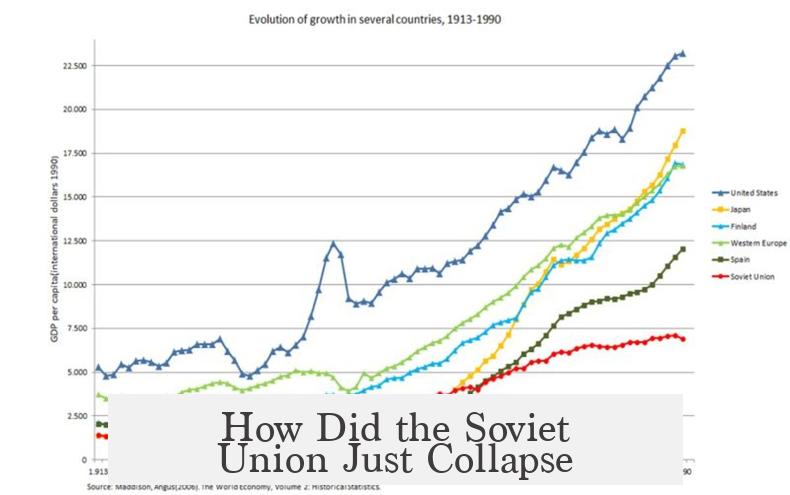
The Soviet Union’s sudden collapse in 1991 wasn’t a snap decision or a coup gone wrong—it was the result of a complex cocktail of reform attempts, political struggles, rising nationalism, and economic strains that spiraled out of control. This collapse, which stunned the world, followed a winding path led mainly by Mikhail Gorbachev’s reforms, empowered nationalist leaders like Boris Yeltsin, and fatal miscalculations from Moscow’s old guard.
Curious how a superpower vanished almost overnight? Let’s dive deep into the tangled story behind the fall of the USSR. This isn’t your textbook dry analysis—it’s a tale of ambition, unintended consequences, and the clash between old and new.
Gorbachev’s Reforms: The Spark That Ignited the Fire
When Mikhail Gorbachev stepped onto the Soviet stage in 1985, his aim was ambitious yet sincere: reform the stagnant Soviet system without losing the essence of its socialist identity. Behind this mission was the recognition that the USSR was faltering, not exploding. Indeed, according to historian Stephen Kotkin, the economy was slowing but stable enough to continue muddling through—a political and economic apocalypse wasn’t knocking imminently.
The Brezhnev era was known among Soviets as the “Era of Stagnation,” a phrase Gorbachev coined to rally support for change. The plan? Introduce reforms that would boost productivity, simplify governance, and curb corruption. But these reforms weren’t quick fixes—they created cracks in the centralized system that held the Soviet empire together.
Gorbachev’s reforms unfolded in three waves:
- Reform Period (1985-1988): Early efforts focused on reviving the economy through mild reforms plus a large dose of moral campaigns—think anti-alcohol drives and anti-corruption crusades. The government tried to ‘fix’ issues with a blend of encouragement and policy nudges, reminiscent of Khrushchev’s attempts decades earlier.
- Transformation Period (1988-1990): When initial reforms didn’t deliver the goods, Gorbachev doubled down. Foreign policy goals shifted dramatically—withdraw troops from Afghanistan, cut military spending, and loosen the Soviet grip on Eastern Europe’s puppet states. Domestically, political reforms like semi-free elections and glasnost (freedom of information) stirred new voices into the debate. This was a seismic shift from decades of tight Soviet control.
- Collapse Period (1990-1991): Trying to juggle new freedoms, a fragmented economy, falling oil prices, and massive budget deficits, the government lost control. Subsidies and price reforms backfired, shortages rose, and the state printed money to cover gaps—a recipe for hyperinflation and chaos.
Gorbachev never intended to dismantle the USSR. His vision was a reformed union, a socialist entity that could compete with the West without repression. Instead, his reforms became a runaway train. The rigid Soviet structures were ill-suited for the new political openness. Forces he unleashed broke apart Soviet unity.
Boris Yeltsin & The Rise of Russian Nationalism
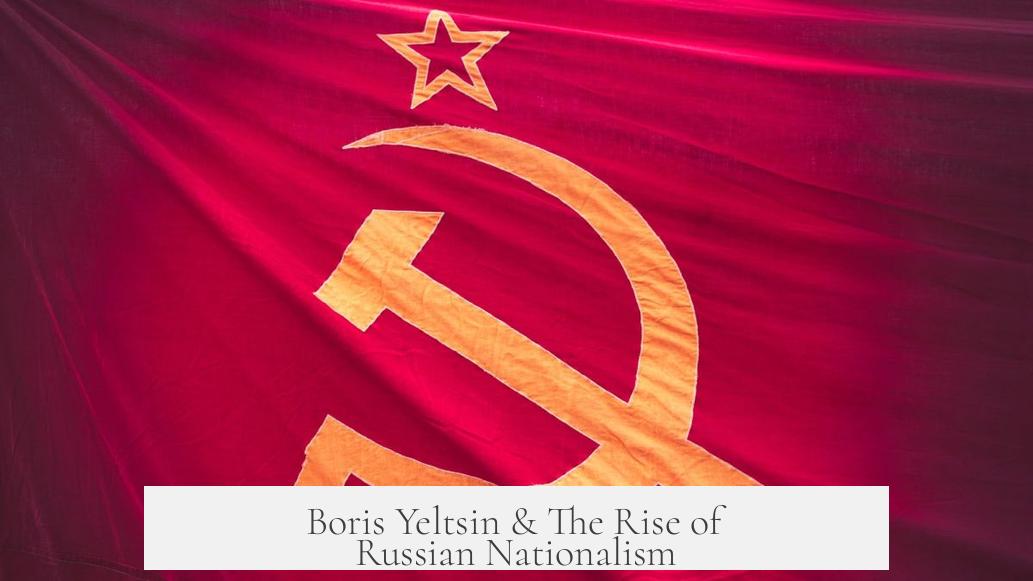
Meet Boris Yeltsin: the political hurricane who turned the Soviet project from reform to collapse. As Gorbachev’s reforms shoved the USSR into political chaos, Yeltsin rode the surge of Russian nationalism to take center stage. Popular and charismatic, he embodied the appetite among Russians to break free from the Soviet identity and institute radical change.
Yeltsin’s vision was bold and unapologetic: dismantle communism, institute a free market economy, and above all, bolster Russian sovereignty. For him, the Soviet Union was an obstacle to Russia’s progress and prosperity. Here’s why:
- He argued Moscow paid too much attention to other Soviet republics, giving them too much power over policymaking.
- He claimed other republics were economic deadweight, relying heavily on Russian support to survive.
- Yeltsin pointed out that the USSR stifled development of Russia’s own governing institutions—Russia had no independent communist party until 1990!
- With the help of dissident voices like Alexander Solzhenitsyn, he argued the Soviet system crushed Russian cultural heritage, including religious traditions like the Russian Orthodox Church.
After popular elections allowed freer political participation, Yeltsin became president of the Russian Soviet Republic and head of its parliament. This power leap gave him authority to challenge Soviet institutions directly—and he used it decisively. By promoting reforms that transferred power from the USSR level to Russia’s government, he accelerated the disintegration.
Echoes of Nationalism Across the Soviet Republics
Meanwhile, the fire of nationalism was not confined to Russia. Various Soviet republics—Estonia, Latvia, Lithuania, Ukraine, Georgia, among others—began asserting their sovereignty. After long, suffocating decades under Moscow’s thumb, their elections brought anti-Soviet politicians to power.
By 1990, nearly all republics declared sovereignty. The USSR’s founding treaties made no clear provisions for “sovereignty within the union.” The result? A confusing, lawless limbo: republics claimed independence but remained nominally part of the USSR. This legal gray zone inflamed tensions between republics and Moscow, straining the union’s fragile cohesion.
Conservatives Lose Their Grip, Repression Fails
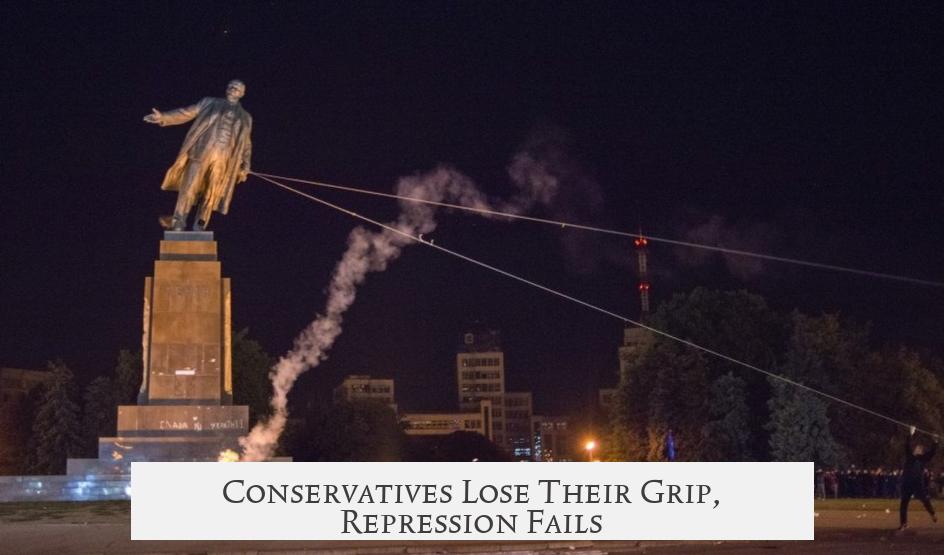
Facing spiraling challenges, Soviet conservatives implored Gorbachev to clamp down. They urged him to declare martial law, wield dictatorial powers, and crush opposition activists. Instead, Gorbachev chose a more cautious path, seeking to renegotiate the union treaty and avoid bloodshed.
He did authorize limited troop deployments to the Baltics, but after violent crackdowns in Lithuania and Latvia made grim television headlines, public and international outrage surged. The U.S. warned Moscow that military repression could kill foreign aid—this mattered deeply as the USSR’s economy was gasping for breath.
Without the will or political capital to enforce harsh repression, Gorbachev’s government lost control. The Kremlin’s power projection vanished like smoke.
But What Actually Broke the Soviet Union’s Back?
Multiple forces smashed the Soviet Union’s foundations. A top-down, highly centralized system could not adapt quickly to new political freedoms and economic realities. Gorbachev’s reforms weakened economic cohesion before new structures could take hold. Nationalist movements across republics drained the union’s unity. Yeltsin’s Russian nationalism redirected power to a new center unwilling to share influence. Add oil price drops, budget crises, and public discontent—and the USSR unraveled rapidly.
Ukraine’s 1991 referendum, voting decisively to leave the USSR, was the final nail. By then, with Russian power concentrated in Yeltsin’s hands and union institutions hollowed out, the Soviet Union existed only as a fading ghost of its former self.
Lessons from This Epic Collapse
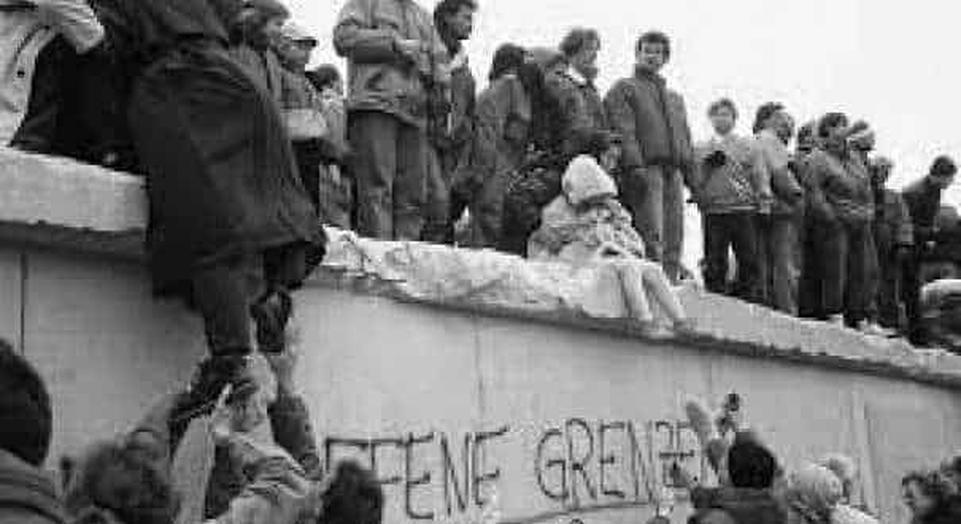
The Soviet story teaches a vital lesson: change from the top down in an authoritarian, centralized system is treacherous. Efforts to reform can open Pandora’s box, releasing uncontrollable forces like nationalism and political dissent. Economic shifts without functional political replacements create chaos.
Some reformers—like Gorbachev—measure success by stability and survival, not destruction. But unintended consequences can overwhelm the best intentions. Meanwhile, populist leaders like Yeltsin can harness public sentiment to drive wrenching transformations rapidly.
What If Gorbachev Had Done Things Differently?
Historians debate whether the Soviet Union’s collapse was inevitable or man-made. Could more cautious reforms have preserved the union longer? Could stronger political controls have prevented nationalist breakaways? Perhaps. Yet, the structural and ideological contradictions—economic stagnation, rising nationalism, outdated governance—made the Soviet experiment deeply fragile.
Gorbachev, striving for a peaceful evolution, found himself caught in a historic storm beyond any one leader’s control. In hindsight, his reforms both saved and doomed the USSR. By the time the dust settled, the Soviet Union was no more—leaving a legacy and lessons that still resonate globally.
In Summary
The Soviet Union collapsed because Gorbachev’s reforms destabilized its centralized economy without effective replacements, unleashed political freedoms that fragmented power, empowered nationalist movements across republics, and allowed leaders like Boris Yeltsin to redirect authority toward Russia. Economic crises and failed repression sealed the fate of the one-time superpower by 1991. It wasn’t abrupt—it was a slow, painful unraveling perfectly illustrating how complex systems can implode when the wrong buttons are pushed at the wrong time.
So next time you wonder how a superpower can “just collapse,” remember: giant political entities don’t fall in a day. They crumble from within, piece-by-piece, by a tangle of forces that resist easy explanations.
Q1: What role did Gorbachev’s reforms play in the Soviet Union’s collapse?
Gorbachev launched reforms to revive the Soviet economy and political system. Instead, these reforms disrupted the centralized system and sparked political movements beyond his control. This loss of control accelerated the collapse.
Q2: How did Gorbachev’s reform periods differ?
- 1985-1988 focused on moderate reforms and anti-corruption efforts.
- 1988-1990 introduced major political changes, ended Communist Party monopoly, and began glasnost.
- 1990-1991 saw economic chaos and loss of government control, leading to collapse.
Q3: Why did the Soviet economy destabilize during the collapse?
Falling oil prices, cuts in alcohol sales, loosening of firm controls, and increased government deficits led to financial instability. The government resorted to printing money, which worsened economic disruption.
Q4: How did Boris Yeltsin contribute to the Soviet Union’s collapse?
Yeltsin gained popular support by opposing the USSR’s old system. After a failed coup, he pushed reforms that transferred power from Soviet to Russian institutions. His Russian nationalism undermined the union.
Q5: Was the Soviet Union doomed in 1985 when Gorbachev started reforms?
Not necessarily. While the economy was slowing, many experts argue the USSR could have continued without immediate collapse. The reforms and political changes triggered by Gorbachev played a key role in its rapid downfall.
